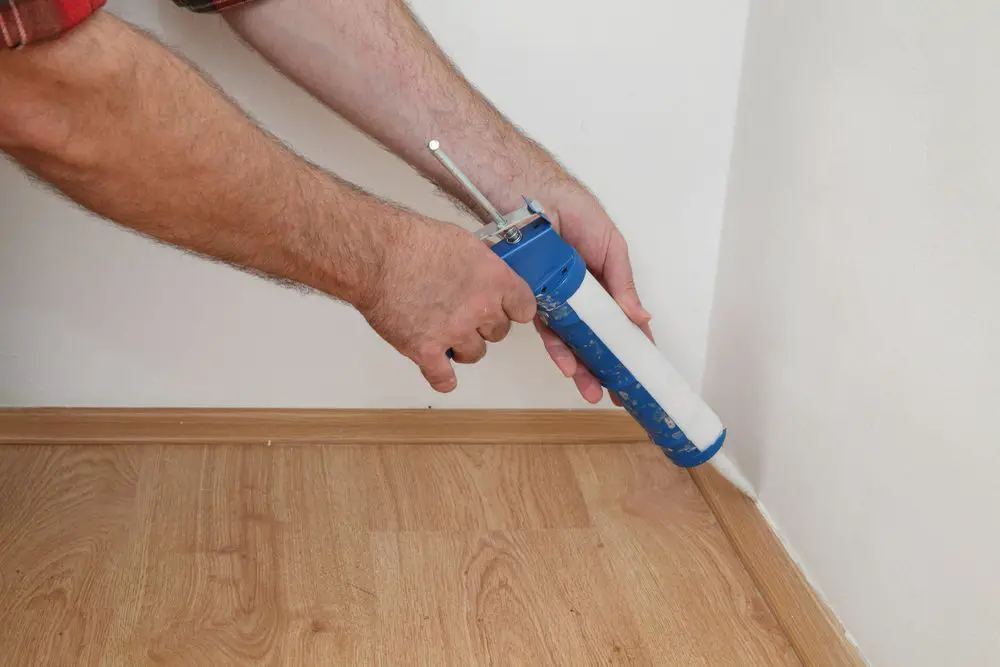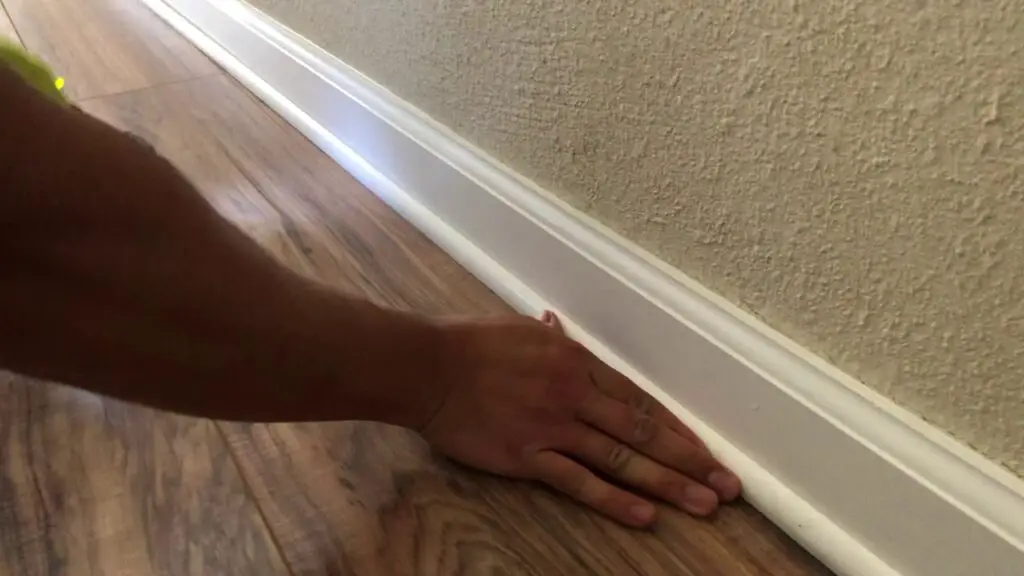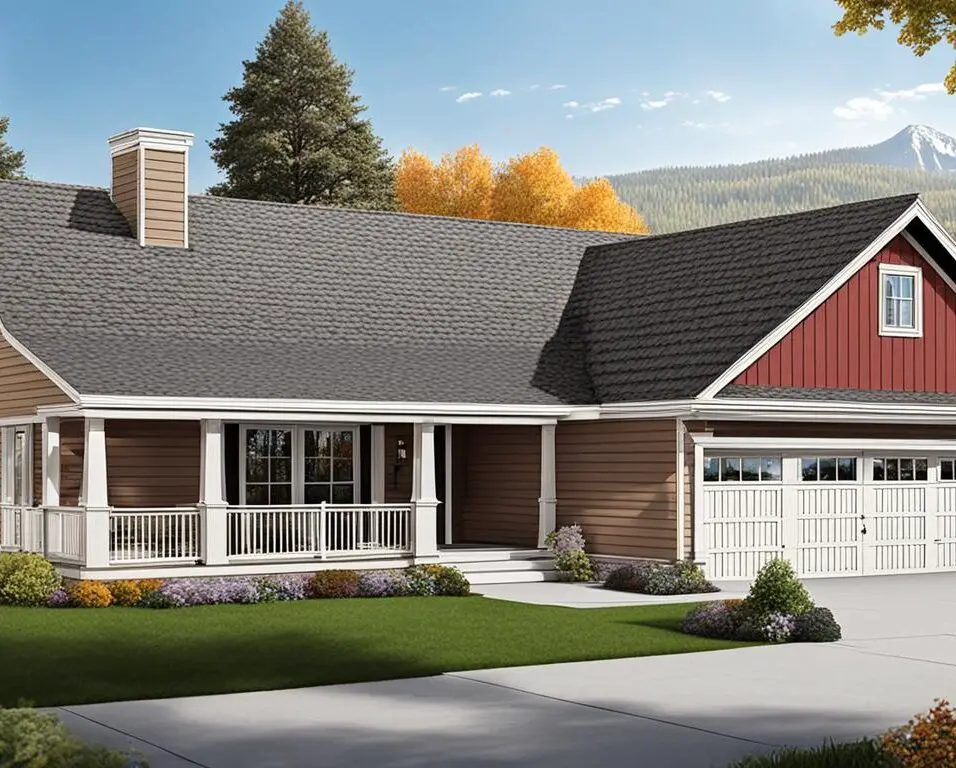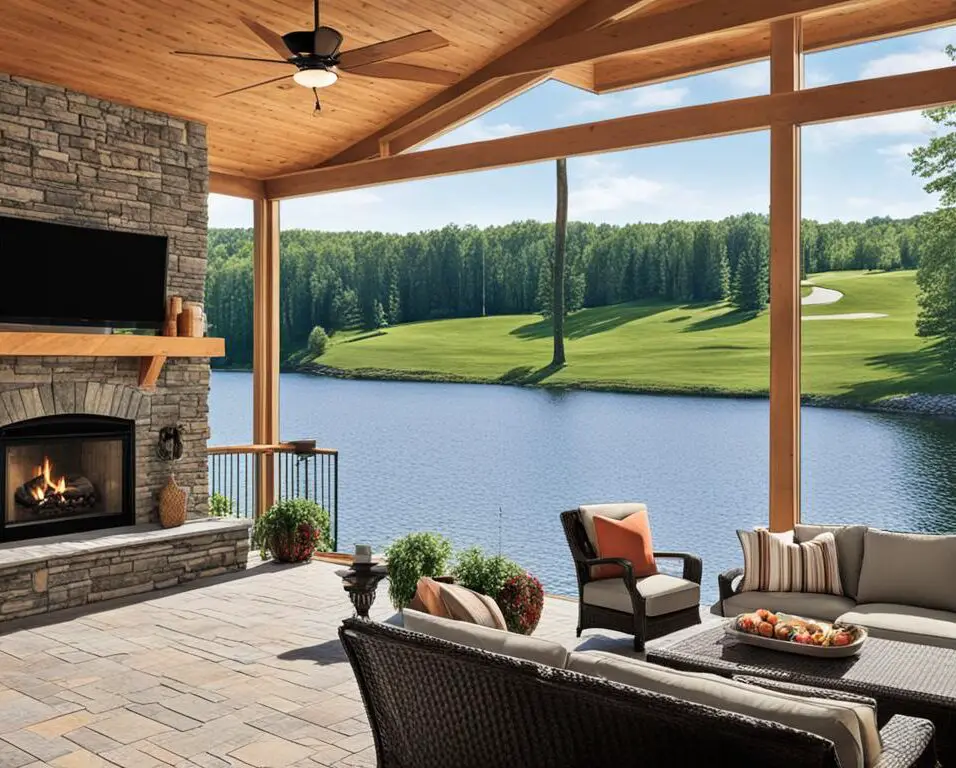Do You Caulk The Bottom Of Baseboards
Introduction
Do You Caulk The Bottom Of Baseboards: When it comes to installing baseboards, many homeowners wonder whether or not they should caulk the bottom of them. Baseboards are an important finishing touch to any room, providing a clean and polished look. However, they can also be a source of drafts and moisture if not properly sealed. Caulking the bottom of baseboards is a common practice that can help improve the overall appearance and functionality of your baseboards.
So, do you caulk the bottom of baseboards The answer to this question depends on a few factors. First, consider the type of flooring you have. If you have hardwood or laminate flooring, caulking the bottom of baseboards is generally not necessary. Caulking this gap can prevent the flooring from moving freely and may cause buckling or warping over time. On the other hand, if you have carpet or tile flooring, caulking the bottom of baseboards can be beneficial. Caulking these gaps can help improve energy efficiency and prevent pests from entering your living space. Similarly, tile floors can also create small gaps that can be sealed with caulk to prevent moisture from seeping in.
Another factor to consider is the overall aesthetic you are trying to achieve. Caulking the bottom of baseboards can create a seamless and finished look, especially if you have gaps or uneven flooring. It can also help to prevent dust and debris from accumulating in these gaps, making cleaning easier. However, if you prefer a more rustic or natural look, leaving the bottom of baseboards uncaulked may be more appropriate.

How do you seal the bottom of baseboards?
- Start with a Clean Surface
- Apply Painter’s Tape
- Carefully Cut the Caulk Cartridge
- Apply Caulk
- Tool the Bead & Remove the Painter’s Tape
- Let Caulk Dry Completely
Sealing the bottom of baseboards is an important step in maintaining the integrity and appearance of your home. Additionally, these gaps can detract from the overall aesthetic of your home. Fortunately, there are several methods you can use to seal the bottom of baseboards and prevent these issues.
One common method for sealing the bottom of baseboards is to use caulk. Caulk is a flexible material that can be applied to the gaps between the baseboards and the floor. It creates a watertight seal that prevents air and moisture from entering your home. To apply caulk, start by cleaning the area thoroughly to remove any dirt or debris. Then, using a caulk gun, apply a thin bead of caulk along the gap. Smooth the caulk with a caulk smoothing tool or your finger, and wipe away any excess. Allow the caulk to dry completely before painting or applying any other finishes.
Another option for sealing the bottom of baseboards is to use weatherstripping. To use weatherstripping, measure the length of the baseboard and cut the weatherstripping to size. Then, peel off the backing and press the weatherstripping firmly into place along the bottom of the baseboard.
Do you caulk the bottom and top of baseboards?
Some workers caulk the bottom edge of the baseboards to keep water out, but they don’t see the need to caulk the top edge because it looks better. Painting over this place also makes it safer in some ways.
Yes, the bottom and top of borders should be caulked. Caulking fills in cracks and gaps in walls to keep air and moisture from getting in or out of a room. Baseboards, which are sometimes called skirting boards, are put up along the bottom of walls to hide the gap between the wall and the floor. Not only do they make a room look better, but they also keep the walls from getting damaged.
There is often a small space between the baseboard and the wall or floor when they are put up. These holes can let air and water in, which can cause wind, energy loss, and even water damage. You can seal these gaps and make the room more energy-efficient and resistant to moisture by caulking the bottom and top of the floorboards.
Caulking the bottom of baseboards
The bottom of baseboards is usually set up a little above the floor so that the flooring material can expand and contract. This hole can be a great place for wind and bugs to get in. You can close this gap and keep bugs and air from coming in by using caulk along the bottom edge of the baseboard. It also helps make the look more finished and put together.
Putting caulk on top of baseboards: The top of baseboards is usually put down a little below the wall so that trim or crown molding can be put on top of it. This crack can also let air and water pass through. You can close this gap and keep air and moisture from getting into the wall by using caulk along the top edge of the baseboard. In addition to making the room warmer, this can help keep water damage from happening.
Overall, sealing the bottom and top of baseboards is a key part of making sure that a room is energy-efficient and lasts a long time. This helps make a better seal that keeps air and moisture from getting in or out. In addition, it makes the room look better by giving it a more finished and clean look. If you are putting in new baseboards or repairing old ones, don’t forget to caulk the top and bottom.
Why is there a gap between baseboard and floor?
For big baseboard gaps, shoe or baseboard moldings may work better than caulking. Floor joist sinking and foundation settlement cause baseboard gaps.
Baseboard-floor gaps have many causes. Poor baseboard installation is widespread. Without adequate wall attachment, the baseboard may separate from the floor. The baseboard may have pulled away from the wall due to floor settlement. Temperature and humidity expand and contract materials, generating baseboard-floor gaps.
Other materials can generate the baseboard-floor gap. Wood baseboards and tile or laminate floors may have various heights. This height difference can cause a small baseboard-floor gap. Vinyl baseboards may not fit rigid floors, leaving gaps.
Sometimes the baseboard-floor gap is intentional. Older homes include baseboards for flooring expansion and contraction. Shoe molding or quarter round fills these spaces at the baseboard for a polished effect.
Whatever the origin, a baseboard-floor gap is unsightly and dusty. Maintaining space cleanliness and appeal requires fixing this. Reattach the baseboard, fill it with caulk or putty, or insert shoe molding or quarter round to close the gap.
How do you fill a gap between baseboard and floor?
Caulking may not work as well as shoe or baseboard moldings for large baseboard gaps. Baseboard gaps often result from floor joist sagging and foundation settlement over time.
Homeowners typically struggle with the baseboard-floor gap during home remodeling tasks. Unattractive gaps let dust, filth, and insects into the room. Fortunately, there are various ways to cover this gap and give your home a seamless effect.
Caulk is an easy solution to cover the baseboard-floor gap. Flexible caulk may be applied and shaped to fit the gap. Cleaning the space before caulking it removes dirt and debris. Apply a thin bead of caulk to the gap with a caulk gun. Smooth the caulk with a putty knife or finger to fill the gap. After the caulk dries, paint it to match your baseboard.
Fill the gap with wood filler for a permanent solution. A putty-like product called wood filler can cover wood gaps and fissures. Clean and remove any dirt before filling the baseboard-floor gap with wood filler. Apply wood filler to the gap with a putty knife and press it firmly. Dry the wood filler after smoothing with the putty knife. After drying, sand the wood filler smooth and paint or stain it to match your baseboard.
Fill the space with quarter round molding for a more ornamental look. Quarter round moulding may readily conceal the baseboard gap with its modest, rounded shape. Before installing quarter round molding, measure the gap and cut it to size. Next, use a nail gun or small finishing nails to adhere the molding to the baseboard, covering the gap. After installing the molding, paint or stain it to match your baseboard for a seamless finish.
Is silicone or caulk better for baseboards?
Fast drying time can be particularly useful if a few substantial gaps require a second application or if the baseboard and caulk will be painted. If the area needs to be used as quickly as possible, latex caulk is the optimal choice. Pure silicone generally takes longer to cure.
When it comes to baseboards, choosing the right material for sealing the gaps between the baseboard and the wall is crucial. Two popular options for this purpose are silicone and caulk. Both silicone and caulk have their own advantages and disadvantages, and the choice between the two depends on various factors such as the specific requirements of the project and personal preferences.
Silicone is a flexible and durable material that is commonly used for sealing gaps and joints. It is known for its excellent resistance to moisture, temperature changes, and UV rays. Silicone is also highly flexible, which allows it to expand and contract with the movement of the baseboard and the wall. This flexibility helps to prevent cracks and gaps from forming over time. Additionally, silicone is available in a wide range of colors, making it easy to match the baseboard color and achieve a seamless look.
Caulk, on the other hand, is a general term that refers to a variety of materials used for sealing gaps and joints. It can be made from different substances such as latex, acrylic, or silicone. Caulk is typically less expensive than silicone and is easier to apply. It also dries faster, allowing for quicker completion of the project. However, caulk may not be as durable as silicone and may require more frequent maintenance and reapplication.
How does caulking the bottom of baseboards affect the overall appearance of a room?
Caulking the bottom of baseboards can have a significant impact on the overall appearance of a room. By filling in the gaps between the baseboards and the floor, caulking creates a seamless and polished look. It helps to create a clean and finished appearance, making the room look more professionally done. Additionally, caulking can help to hide any imperfections or unevenness in the baseboards or flooring, giving the room a more cohesive and aesthetically pleasing appearance.
Caulking the bottom of baseboards can also contribute to the overall cleanliness and maintenance of a room. By sealing off the gaps, it prevents dust, dirt, and other debris from accumulating in those hard-to-reach areas. This not only improves the appearance of the room but also makes it easier to clean and maintain.
Are there any specific types of caulk that are recommended for sealing the bottom of baseboards?
When it comes to sealing the bottom of baseboards, it is important to choose the right type of caulk to ensure a proper and long-lasting seal. There are several types of caulk available in the market, but not all of them are suitable for this specific purpose. The most recommended type of caulk for sealing the bottom of baseboards is silicone caulk.
Silicone caulk is highly flexible and durable, making it ideal for sealing gaps and cracks in baseboards. It has excellent adhesion properties, which means it will adhere well to both the baseboard and the floor, creating a tight seal that prevents air and moisture from seeping through. Additionally, silicone caulk is resistant to mold and mildew, making it a great choice for areas that are prone to moisture.
Can caulking the bottom of baseboards help prevent moisture or water damage?
Yes, caulking the bottom of baseboards can indeed help prevent moisture or water damage. When baseboards are installed, there is often a small gap between the baseboard and the floor. This gap can allow moisture or water to seep in, especially in areas prone to spills or high humidity. By caulking this gap, you create a barrier that prevents water from entering and causing damage to the baseboard or the wall behind it.
In addition to preventing water damage, caulking the bottom of baseboards can also help with moisture control. Moisture can accumulate in the gap between the baseboard and the floor, leading to mold or mildew growth. By sealing this gap with caulk, you reduce the chances of moisture buildup and create a more hygienic environment.
Are there any potential drawbacks or disadvantages to caulking the bottom of baseboards?
While caulking the bottom of baseboards can provide numerous benefits, there are also a few potential drawbacks to consider. One of the main disadvantages is that once the baseboards are caulked, it can be difficult to remove or replace them without damaging the surrounding walls or flooring. This can be a concern if you plan on making changes to your room’s layout or if you need to access the area behind the baseboards for any reason.
Another potential drawback is that caulking the bottom of baseboards can be a time-consuming and labor-intensive task. It requires careful preparation, such as cleaning and priming the surface, and precise application to ensure a neat and professional finish. Additionally, if the caulk is not applied properly or if low-quality caulk is used, it may not adhere well or may crack over time, leading to an unsightly appearance and reduced effectiveness in sealing out moisture.

Conclusion
Based on the research conducted, it can be concluded that caulking the bottom of baseboards is a recommended practice. Caulking serves several purposes, including improving the overall appearance of the baseboards, preventing moisture and air infiltration, and reducing the risk of pest infestation. By sealing the gaps between the baseboards and the floor, caulking helps create a more finished and polished look in a room. It fills in any unsightly cracks or spaces, giving the baseboards a seamless and professional appearance.
Caulking the bottom of baseboards can also help in deterring pests. Small gaps between the baseboards and the floor can serve as entry points for insects, rodents, and other pests. By sealing these gaps with caulk, it becomes more difficult for pests to enter the room, reducing the risk of infestation. This is particularly important in areas where pests are common or in older homes where gaps may be more prevalent.
Caulking the bottom of baseboards is a beneficial practice that can enhance the appearance of a room, prevent moisture and air infiltration, and deter pests. It is a relatively simple and cost-effective solution that can provide long-lasting results. Whether for aesthetic purposes or for practical reasons, caulking bottom of baseboards is a worthwhile investment that can improve the overall quality and comfort of a space.







